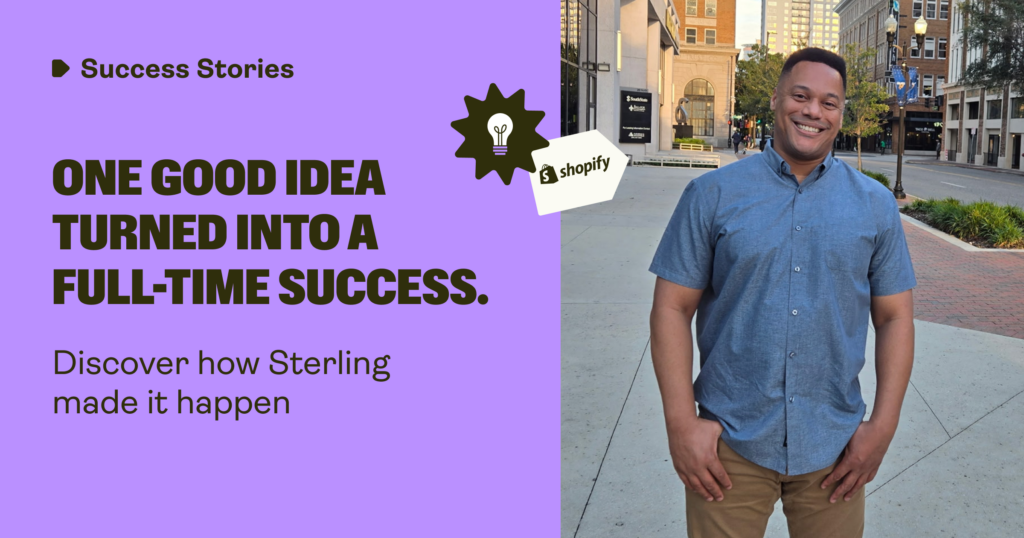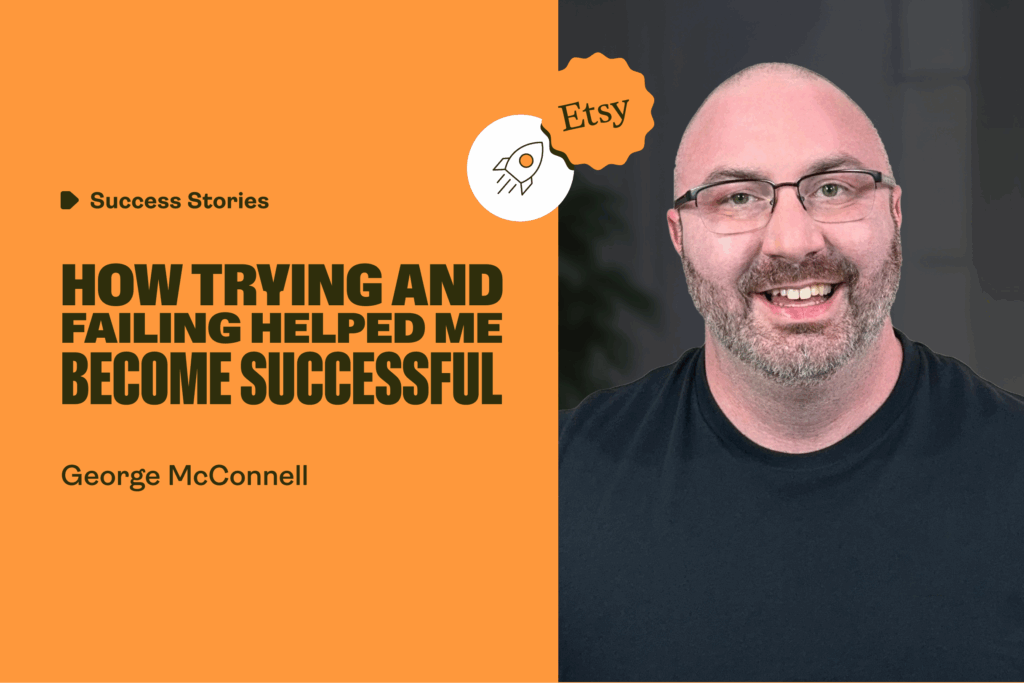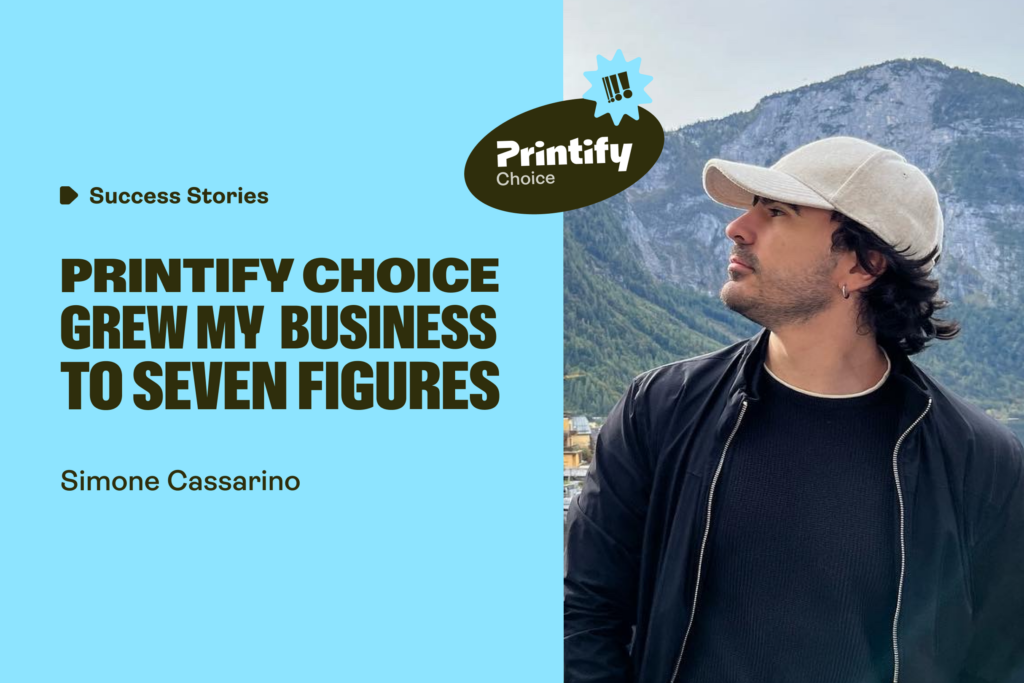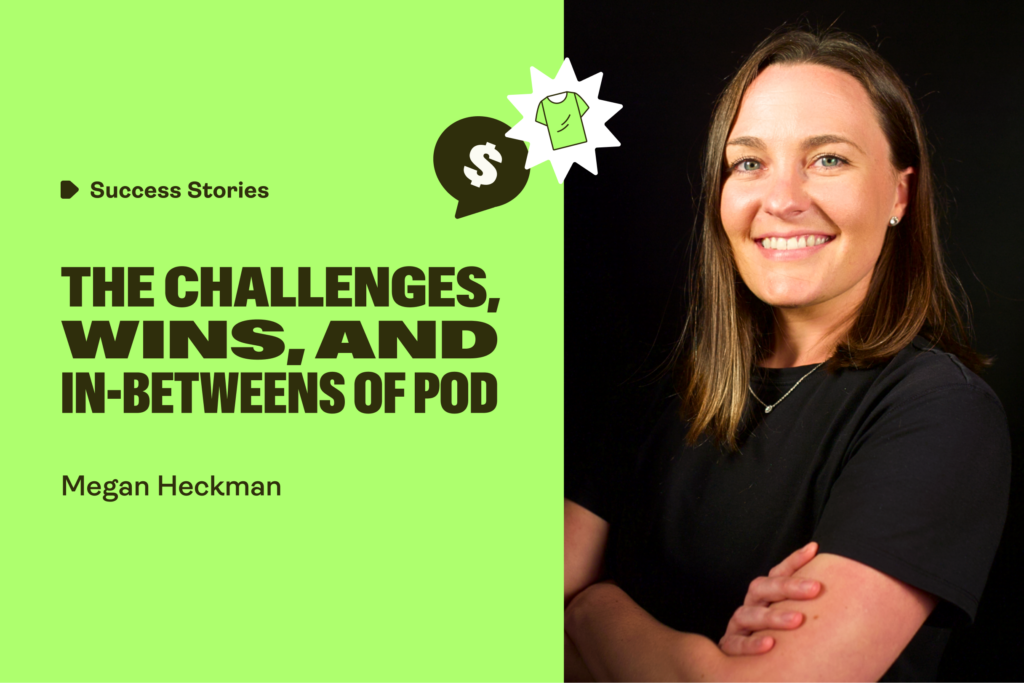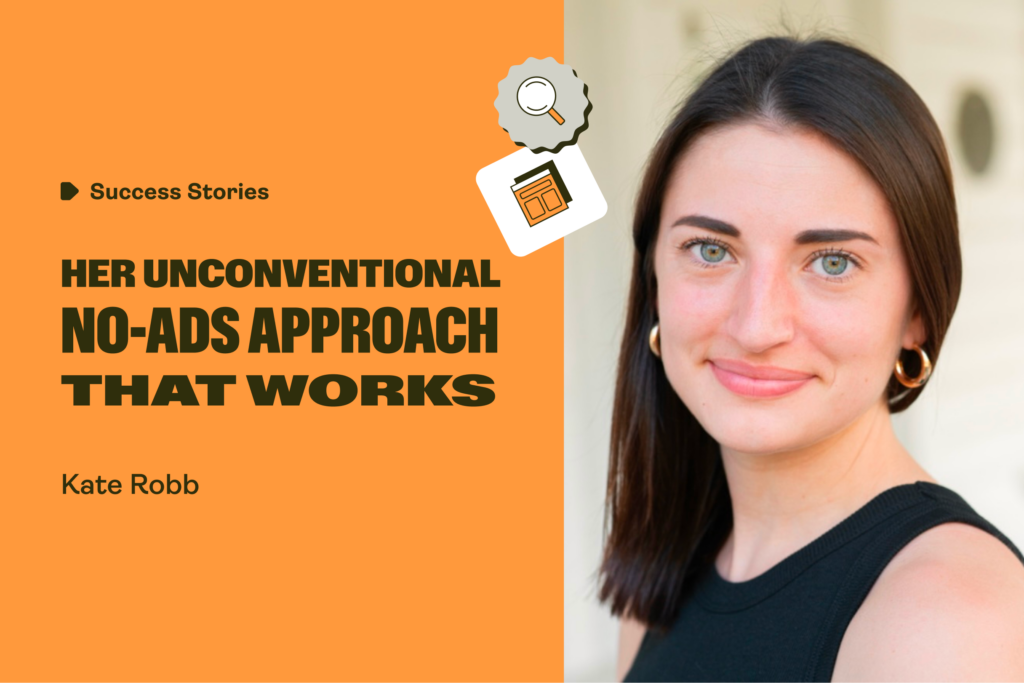Turn passion into profit with Printify
Can a pastor run a successful eCommerce business?
With more than $200k in sales revenue and a community-backed, thriving brand, Carlos Rodriguez, a pastor and founder of The Happy Givers, provides a pretty convincing answer.
Even though his store’s road to success was paved with heaps of disappointing moments, ideas that he thought would be brilliant flopped, and sales weren’t budging, Carlos kept going.
The Happy Givers’ mission was much bigger than just making money. The store reinvests 100% of the profits into projects serving the poorest of the poor – feeding, educating, and transforming communities around the world. And boy was the grinding worth it!

Things started turning around when he realised he doesn’t need to do everything on his own – there are reliable partners and talented experts that can help him build a do-good eCommerce empire.
Why Printify?
“It wasn’t until Printify that I started using dropshipping, and then I realized, wait a minute,” remembers Rodriguez. “I can work with other companies. I can find somebody who can help me market on Facebook. I can pay somebody to help me make more money through Google Shopping. Now, the whole business has moved, where I’m outsourcing customer service.”
So, how does one go from a new beginner to an eCommerce mentor? Carlos Rodriguez takes us on a journey, highlighting the key lessons and challenges he faced as a first-time dropshipper.
Learn more about print on demand and starting a print-on-demand business.
Giving before taking: Create a stream of valuable content

Learning to listen to, engage and create value for your audience before you ask for their money is one of the fundamental challenges of eCommerce.
People don’t like to be sold to, but everyone’s looking for content they can connect to and share with others.
At the beginning of his dropshipping journey, Rodriguez stumbled on this nugget of wisdom and tried to make the most out of it.
“It’s almost like I decided, okay, I’m going to create a TV channel. You take, for example, ABC or NBC. They’re constantly producing content – news, shows, comedies, and sports. They’re producing all that content so that then they have the opportunity to sell you something in between the consuming of all that content. I thought, if I’m going to sell stuff, whether it’s my brand, my shirts, also my ideas, and my message, I need to have my own TV channel,” remembers the founder of The Happy Givers.
Giving your target audience a reason to feel good about buying from you is also a bulletproof strategy.
Whether you’re offering to donate to a chosen charity or opt to sell items that can be easily recycled or appeal to anything else that matters to your niche, finding the higher purpose for your brand can often be the factor that drives revenue growth and fosters brand loyalty.
And once you have a message that resonates with your Audience, the rest takes care of itself. Rodriguez explains:
“I write something on social media and it goes viral. A quote, for example. Why can’t I turn that quote into a shirt or a mug? Because people obviously connect with that message, so I want them to connect to it more. If they’re drinking their coffee, and my quote is on their coffee mug… And then, oh, wait a minute. If that money that they use to buy the coffee actually supports what the quote was all about, it’s this circle of what we’re talking about – it’s what people want to use, and wear, and at the same time, it helps the work that we’re doing. It’s a win-win-win.”

In one of our articles covering the monetization of online communities, we have written about how consumers perceive the same type of personality characteristics in brands as they do in people. That’s why developing a brand’s personality through unique, inspiring content could play a huge role in its success and profitability.
Find your network: Tap into an existing community or build your own

As any successful dropshipper will tell you, to build a stand-out brand that generates real profits you need a network of passionate people. An exclusive fan club of some sort that brings together people with similar values or interests and makes them feel part of something much bigger than just an eCommerce store.
Carlos Rodriguez seconds this thought: “Well, first, find that network. Let’s say you’re selling shirts that are about gaming or about Super Mario Bros. Get on Facebook groups that are all about that. Not just other people trying to sell shirts like that, but people that actually care about those products. Learn what they like, what they care about, listen to them. Actually, start caring about that stuff.
If you really care about the message, the product that you’re selling, then it’s going to be successful in one way or another.
And it’s not just about the amount of money you’re making, although that’s very, very helpful. But it’s also about you caring about the product and finding people that you can network with.”
A strong community quickly becomes a serious sales driver
Not only do they purchase from you, but they also wear your products proudly and recommend your brand to friends, family, and colleagues. That offers an incredible marketing value for any bootstrapping brand, but especially so for dropshippers that find it challenging to stand out from the sea of online merchants.
“One of the Steelers, Pittsburgh Steelers, football players, was wearing one of my hoodies. The “love thy neighbor” that I sell, probably my best seller. One of the lines says, “Love thy Jewish neighbor.” He was wearing that all over the news, and he’s giving us a shout out, “This is a hoodie from The Happy Givers. Those guys are doing good work all over the world. It was appropriate for me to wear this today.”I’m selling like $30,000 in 48 hours because of that.That took time.
You have to start expanding, finding people that have similar voices to yours, similar things that they care about, actually giving product to them, sending stuff for free to them, engaging the influencers within those realms. Then eventually, people start wearing it. People start sharing it. People start tagging themselves wearing it, and it just goes a snowball effect in that sense.”
Leverage the power of social proof: Use real images of real people

Social proof is basically saying to your potential customers “trust me because these people did and it turned out great for them.” It’s a massive advantage.
“Don’t just put a store and expect people to buy,” cautions Rodriguez. “When you start your store, make sure you’re buying the products yourself and you’re wearing them as you’re hanging out and your friends are wearing them and you’re taking pictures with them. And then that’s when you start reaching out to influencers.”
Carlos says his best selling products and best performing social ads almost always include real pictures of real people. While professional, highly polished images can boost a brand’s appeal, it’s just as important to keep the balance right and offer people something they can easily relate to – and that’s where user-generated content comes in.
Wrapping Up
A key lesson that Carlos wants every first-time merchant to take away from this is that spending lots of money on ads at the very beginning of your journey is a mistake. Your best strategy for orchestrating a smooth and lean kickoff is to lean on your personal network and the community you’re planning to target.
“You shouldn’t spend your money on ads,” insists Rodriguez.
“Use your friends, your family, maybe other business leaders to validate your ideas first. Use your current network and community to really figure out what works and what doesn’t.”
Once you confirm demand and traction, then you can step into phase two and start pouring money into social ads. Remember, people want to contribute to something bigger, be part of a community and see the social proof to affirm your brand’s credibility.




